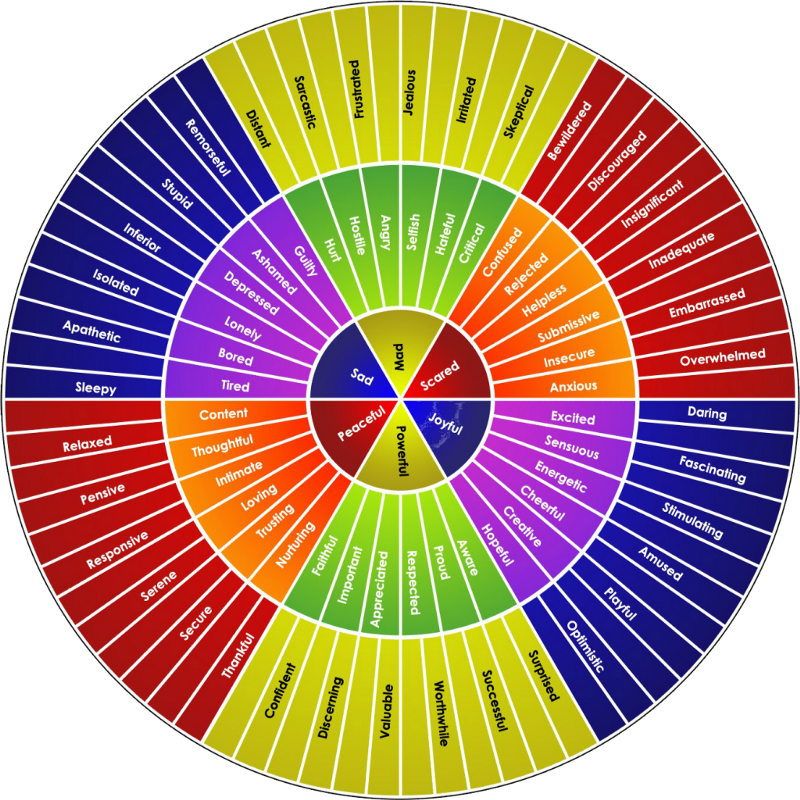The Feelings Wheel: Your Tool for Improving Emotional Intelligence
How do YOU feel? Expand your emotional vocabulary with The Feelings Wheel.
How do YOU feel? Expand your emotional vocabulary with The Feelings Wheel.
Many of my clients struggle to identify and name their emotions. I’ll ask how they are feeling and what I’ll get back is either what they thought or a description of what happened. Ideally, our parents helped us to name our emotions when they happened. Often, we were just told to stop feeling.
A Handy Tool: The Feelings Wheel
How and When to Use The Feelings Wheel
I like the idea of taking your “emotional temperature.” A few times a day, ask yourself the simple question: “How do I feel right now?” If you’re not able to answer in a way that feels ‘just right,’ consult the feelings wheel. Poke around and see what fits.
The feelings lists are just suggestions and are by no means all the feelings that exist. Think of it like a box of crayons: the center is a starter box of basic colors, the middle is the expanded box and the outer circle is all the color combinations.






I've got two versions of this. They were indispensable a couple of years ago when my husband (who has mental health issues) was learning how to stop armoring and start identifying his feelings. We kept them on the coffee table for a whole year, easily accessible. He got to the point where he didn't need to reference them so often, then not at all. He's gotten pretty good at it!
Did this originate from or was it featured in parent effectiveness training the book from my childhood?
Timeless truths
Do you in therapy use the phrase is it possible as a starting point?
That and the Nugget of knowledge that I learned in college
When you ask a question wait for the answer, those two eternal truths hold true as to achieving what you want AKA is it possible as the entry with the question stated and await the answer you seek.
It takes a prick factor to say no to is it possible